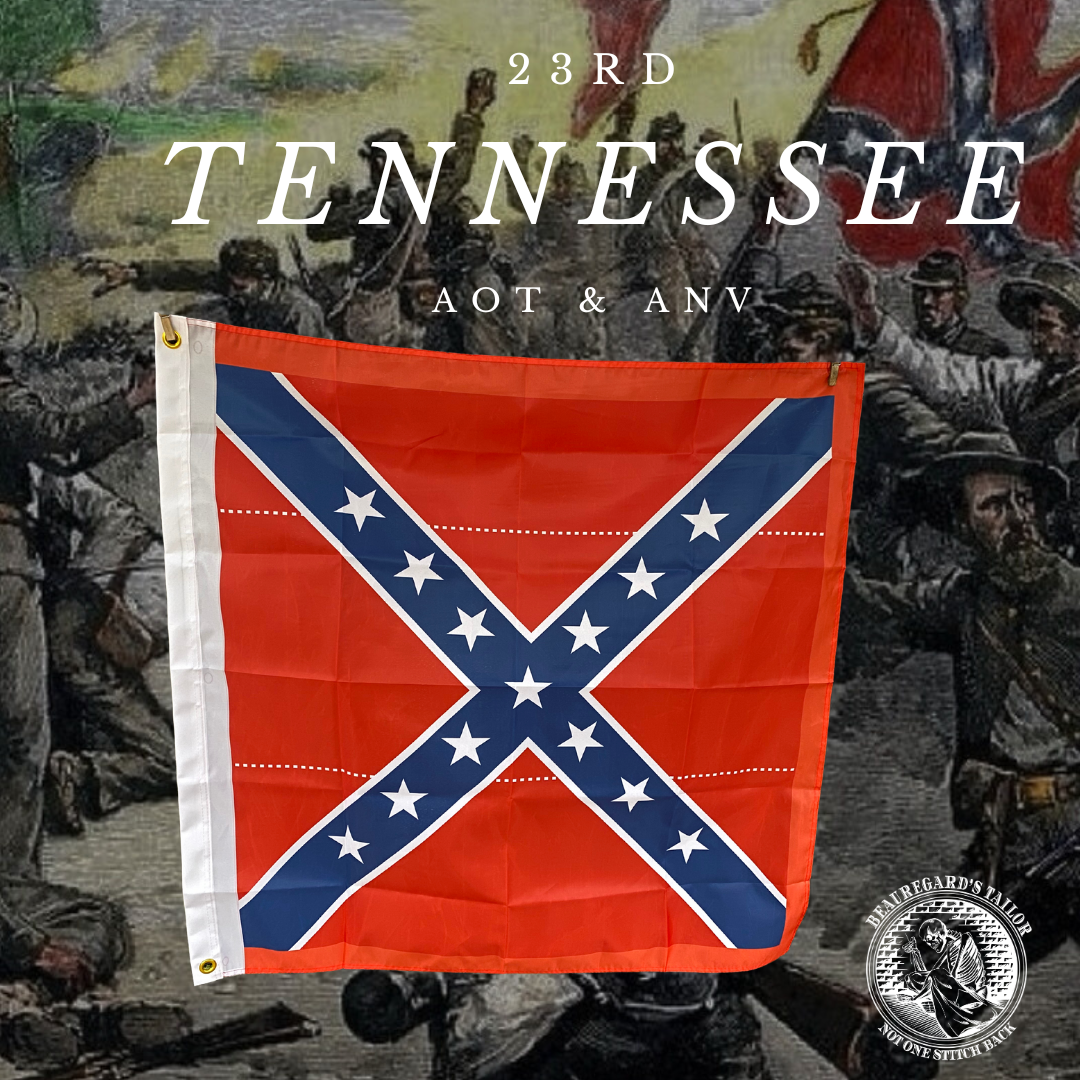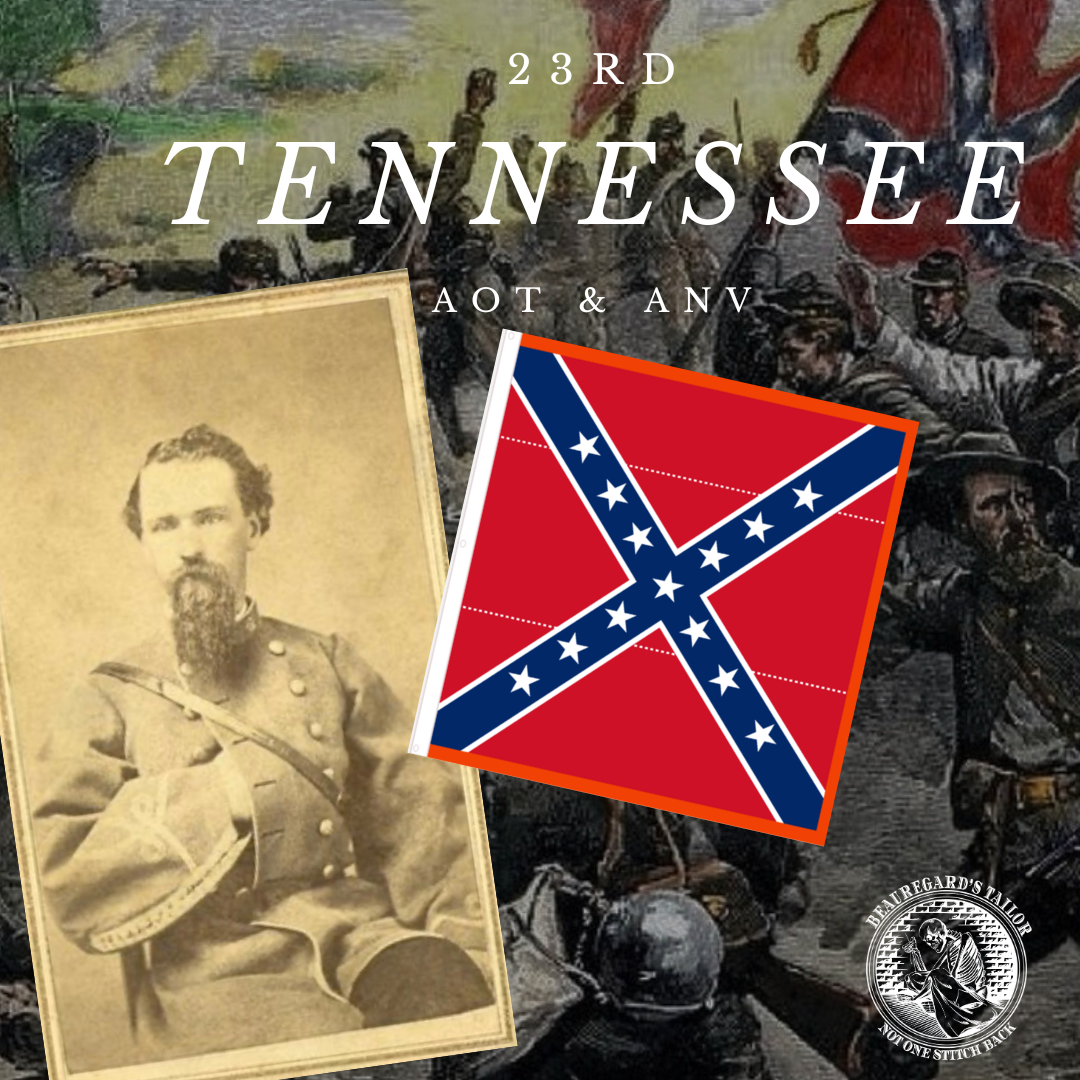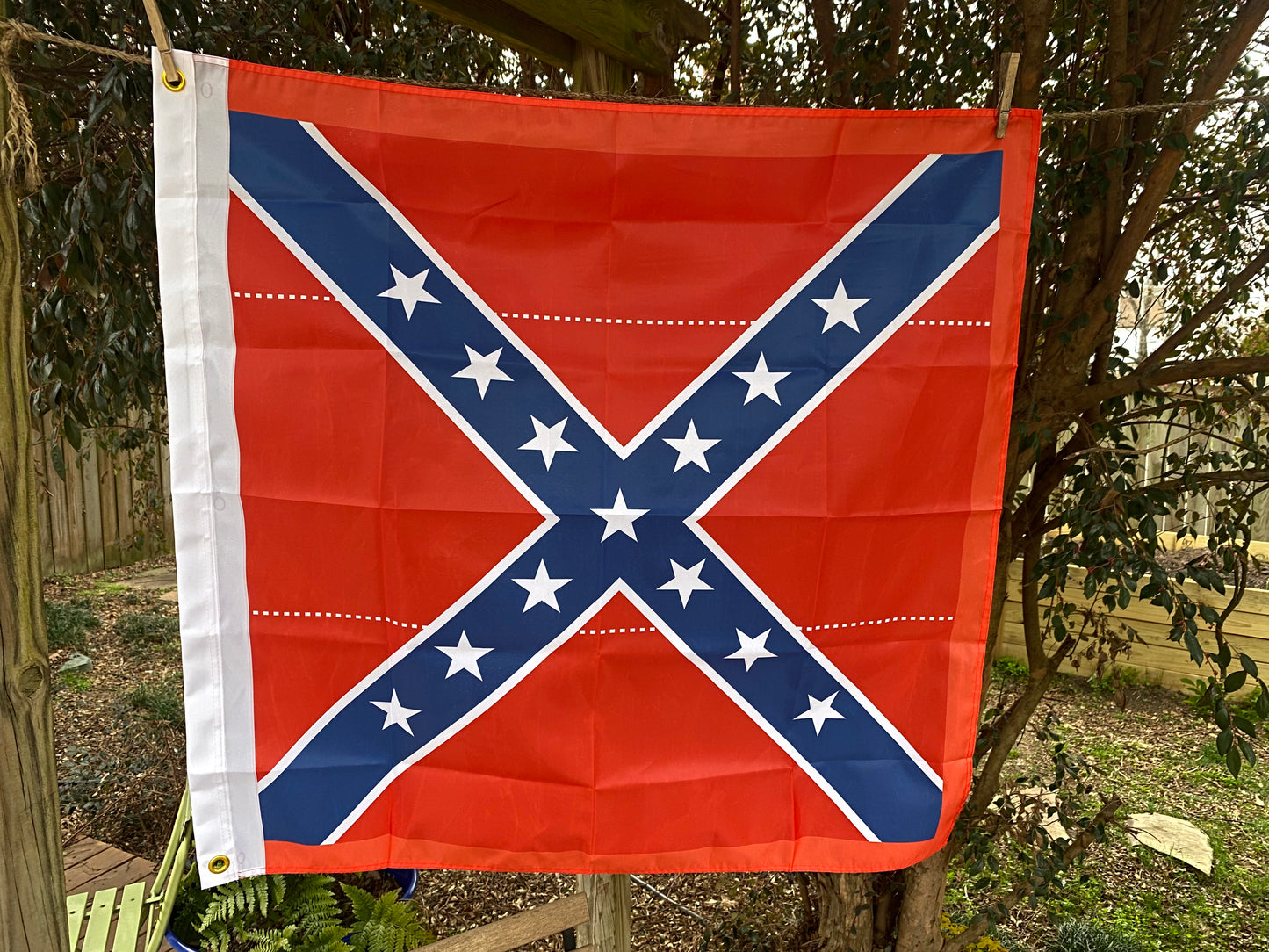Beauregard's Tailor
23rd Tennessee Infantry House Flag
23rd Tennessee Infantry House Flag
Couldn't load pickup availability
These are modern all-weather nylon flags for your house or garden based on the original flag carried by the 23rd Tennessee.
These flags are made to order and take about 3 weeks to produce and ship.
Historical Background:
The regiment was organized for State service at Camp of Instruction at Camp Trousdale, Sumner County, where it was mustered into Confederate service.
Company reports show the regiment moved to Bowling Green, Kentucky sometime in October, 1861, where, on October 23 it was reported in Brigadier General Simon B. Buckner’s Division, Colonel John C. Brown’s Brigade, composed of the 3rd, 18th, and 23rd Tennessee Infantry Regiments. In January, 1862, it was reported in Major General William J. Hardee’s Division, Colonel Patrick R. Cleburn&s Brigade, composed of the 15th Arkansas, 6th Mississippi, 23rd, 24th, and 35th Tennessee Infantry Regiments. February 23, 1862, at Murfreesboro, the same brigade, but the 1st Arkansas had replaced the 15th Arkansas, and the Watson Louisiana Battery had been added.
As part of Cleburne’s Brigade, it participated in the Battle of Shiloh, April 6-7, 1862, with Lieutenant Colonel Neill in command of the regiment. In this engagement the brigade was reported as consisting of the 15th Arkansas, 6th Mississippi, 2nd (Bate’s), 23rd, 24th, 35th Tennessee Infantry Regiments and the Watson Bauery. The 23rd reported 570 men engaged at Shilob, but no record of casualties was found, although they must have been heavy, for on April 26 the regiment reported only 337 effectives. On this date Cleburne’s Brigade consisted of the 15th Arkansas, 2nd, 23rd, 24th, 35th, and 48th Tennessee Infantry Regiments, plus two Arkansas Batteries. On May 23, Hardee reported that 13 men, whose homes were in Lawrence County, had deserted from the 23rd Regiment.
On June 30, the 23rd had been transferred from Cleburne’s Brigade, and was reported in Hardee’s Corps, Colonel A. T. Hawthorn’s Brigade, composed of the 33rd Alabama, 17th, 21st and 23rd Tennessee Infantry Regiments, and Austin’s Battery. Here began an association with the 17th Tennessee Infantry Regiment which continued throughout the war.
The regiment participated in the invasion of Kentucky under General Bragg as part of Brigadier General Bushrod R. Johnson’s Brigade composed of 5th Confederate, 17th, 23rd, 25th, 37th, 44th Tennessee Infantry Regiments, and Darden’s Mississippi Battery. It was present at the capture of Munfordville, Kentucky, and engaged at the Battle of Perryville under the command of Lieutenant Colonel R. H. Keeble. Colonel Keeble reported he took 201 men into action, and suffered 52 casualties.
On November 22, 1862, Johnson’s Brigade was reported in Major General Simon B. Buckner’s Division, and was at this time composed only of the 17th, 23rd, 37th, and 44th Tennessee Infantry Regiments. A month later, in the Battle of Murfreesboro, December 31, 1862, Johnson’s Brigade was in Major General Cleburne’s Division. In this battle, the 25th Tennessee Regiment was once more listed as a member of the brigade, and the 17th, 23rd, 25th and 44th Tennessee Regiments remained together for the duration. Lieutenant Colonel Keeble commanded the regiment, and reported 272 engaged, 63 casualties. Lieutenant Colonel Keeble was commended for steady courage and skill in handling his men.
On June 24, at Hoover’s Gap, Johnson’s Brigade was in Major General Alexander P. Stewart’s Division. Colonel R. H. Keeble commanded the regiment, and reported five casualties. Incidentally, in the reports covering this action, mention is made of the Matt Martin farm, so his company was probably raised in that area.
The brigade continued in Stewart’s Division through July and August, but at Chickamauga September 19-20, was in Bushrod Johnson’s Provisional Division, with Colonel J. S. Fulton in command of the brigade, and Keeble in command of the regiment. Here the regiment had only 181 engaged, (26 barefoot men having been sent to the rear before the battle began), and lost 98 in casualties, including Lieutenant Colonel Ready, and Major Lowe, who were wounded.
On November 20, 1863, Johnson’s Brigade was again reported in Buckner’s Division, with the brigade composed of 17th/23rd 25Sth/44th, and 63rd Regiments. The 17th2 23rd were under the command of Colonel W. W. Floyd, of the 17th. This was a field consolidation for tactical purposes, and separate muster rolls for the two regiments were maintained, but they continued to act as a field unit from this time forth. For further details as to the history of the combined unit, and brigade and division changes, see the history of the 17th Tennessee Infantry Regiment.
Buckner’s Division was detached from the Army of Tennessee on November 22, 1863, and went with Lieutenant General James Longstreet on his campaign into East Tennessee. It operated in East Tennessee and western Virginia through the next winter, and moved to Richmond, Virginia May 4, 1864. It continued in the fighting around Richmond and Petersburg until the final surrender at Appomattox. Engagements mentioned in regimental and company reports were Fort Loudon, December 14, 1863; Bean’s Station, December 22-31, 1863; Walthall Junction, Swift Creek, Drewry’s Bluff, Virginia, in May and June 1864; and the siege of Petersburg in the fall of 1864 and early 1865. It lost its regimental colors to a Federal assault on the lines around Petersburg on April 2, 1865.
Colonel Floyd was killed in May 1864, and Colonel Keeble took command of the 17th/ 23rd. Keeble was killed June 30, 1864 and Colonel Horace Ready was in command during the final months.
Shipping Timelines
Shipping Timelines
These flags are made to order and take about 4 weeks to produce and ship.








